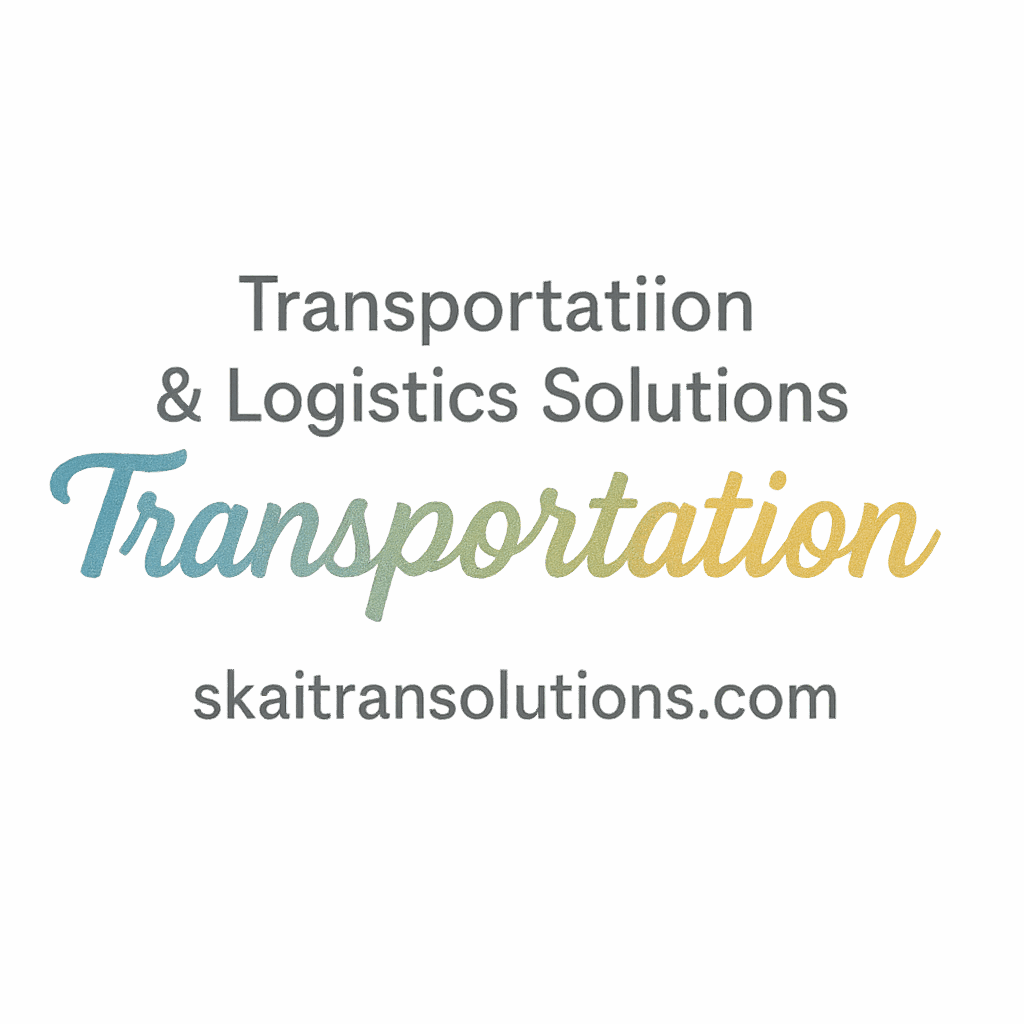Introduction to Fleet Scheduling
Imagine trying to run a marathon in flip-flops. That’s what managing a fleet without a proper schedule feels like. Whether you’re coordinating five vehicles or five hundred, having an efficient scheduling system is the difference between smooth operations and logistical chaos.
In this guide, we’re diving into the 10 steps for efficient transportation fleet scheduling, ensuring your operations are optimized for performance, safety, and cost-efficiency.
Why Efficient Fleet Scheduling Matters
Scheduling isn’t just about getting trucks on the road. It’s about streamlining logistics, maximizing output, and delivering consistent results without burning resources.
Reducing Operational Costs
With optimized schedules, companies reduce fuel use, driver overtime, and maintenance needs—huge cost sinks in transportation. It’s all about doing more with less.
Want to learn more about reducing costs in transportation? Check out this guide on cost reduction strategies.
Enhancing Customer Satisfaction
Timely deliveries and consistent service levels make clients happy. A good schedule means fewer delays and better communication—keys to customer retention.
For a deeper dive into this, head over to Customer Experience & Safety.
Step 1: Analyze Fleet Operations Thoroughly
If you don’t know where you’re struggling, how can you fix it? Begin by examining your current fleet operations.
Identify Weak Spots in Your Fleet Schedule
Ask questions like:
- Are deliveries consistently late?
- Do drivers complain about inefficient routes?
- Is your fuel usage out of control?
Use Data to Reveal Bottlenecks
Leverage tools like telematics and fleet dashboards to gather insights. If Monday routes always run late, there’s likely a pattern to fix.
Leverage Telematics Tools
These technologies help track vehicle speed, idle time, and route patterns, giving you a bird’s-eye view of inefficiencies.
For more on this, explore Fleet Operational Best Practices.
Step 2: Prioritize Real-Time Data Integration
In fleet scheduling, timing is everything. Real-time data helps you respond to the unexpected with agility.
Importance of Live GPS Tracking
Knowing exactly where your vehicles are allows you to adapt to traffic jams or last-minute delivery requests.
Connecting with Fleet Management Software
An integrated system brings vehicle diagnostics, routing, and scheduling under one digital roof—no more spreadsheets.
Find tech-forward strategies on Transportation Technology Innovation.
Step 3: Build a Predictive Scheduling Model
Don’t just react—predict.
Use AI and Historical Trends
AI algorithms analyze past delivery patterns and suggest more efficient routes or times.
Include Weather and Traffic Forecasts
Weather can make or break your schedule. Factor it in using predictive software to avoid delays.
For innovative tips, follow this link on Innovation in Transportation.

Step 4: Group and Optimize Routes
Route planning is like solving a puzzle. Efficient clusters reduce distance and time.
Cluster Deliveries Based on Location
Group deliveries going to similar areas. This reduces fuel usage and increases delivery speed.
Utilize Route Optimization Tools
These tools analyze live and historical data to map out the most effective path for each vehicle.
Don’t miss this article on Logistics and Supply Chain Solutions.
Step 5: Schedule with Driver Availability in Mind
Your drivers are your most valuable assets—schedule around their capacity and legal limits.
Match Routes with Driver Skill Sets
Some routes require seasoned pros, especially those with heavy traffic or tight loading zones.
Comply with Labor Regulations
Avoid overworking drivers. Fatigued driving is not just unsafe—it’s illegal.
Stay compliant by exploring Compliance in Transportation.
Step 6: Balance Load Capacity and Vehicle Type
Not all deliveries are created equal. One size does not fit all when it comes to vehicles.
Avoid Underutilization or Overloading
An overloaded van is dangerous and inefficient. Underutilization wastes resources. Balance is key.
Assign the Right Vehicle for the Job
Use box trucks for large shipments, vans for smaller deliveries, and optimize according to terrain and traffic.
Check out our resources on Vehicle Scheduling.
Step 7: Create Contingency Plans
Even the best schedule needs a Plan B.
Prepare for Vehicle Breakdowns
Keep maintenance records up-to-date and have backup vehicles available when needed.
Establish Emergency Driver Pools
Have on-call drivers to cover for sick days or emergencies. It reduces delays and keeps operations smooth.
Get insights on proactive safety at Safety Inspections.
Step 8: Automate Where Possible
Why do manually what a system can do for you automatically?
Use Automation to Save Time
Automation reduces planning hours and human error, and speeds up response times.
Reduce Manual Scheduling Errors
Let smart scheduling software calculate routes, timing, and resources with greater accuracy.
Explore cutting-edge tools at Autonomous Transportation.
Step 9: Monitor KPIs Continuously
If you’re not measuring, you’re guessing.
Use Fleet Metrics to Measure Efficiency
Track KPIs like on-time delivery rates, fuel usage, and driver performance. Identify what’s working and what’s not.
Apply Data-Driven Adjustments
Don’t wait for the monthly report. Adjust as you go based on real-time insights.
Explore Fleet KPIs and Metrics to enhance performance.
Step 10: Keep Communicating Across Teams
Your drivers, dispatchers, and warehouse team all need to be on the same page.
Bridge the Gap Between Dispatchers and Drivers
Create open channels—apps, radios, or messaging platforms—to keep everyone informed and connected.
Build Feedback Loops
Ask your drivers what’s working. They often know better than anyone what needs tweaking.
Looking for strategic support? Dive into Transportation Industry Insights and Strategy Tips.
Key Takeaways for Fleet Scheduling Success
- Efficient scheduling cuts costs and improves delivery reliability.
- Real-time data and automation are essential.
- Driver well-being, vehicle capacity, and route optimization go hand-in-hand.
- Regular KPI tracking keeps your system evolving.
Conclusion
Efficient transportation fleet scheduling isn’t a one-time task—it’s a continuous effort that evolves with your business. With these 10 steps, you’re not just putting vehicles on the road; you’re creating a seamless, cost-effective, and customer-centric transportation ecosystem.
Whether you’re refining your current system or building one from scratch, keep your eyes on the data, listen to your team, and leverage the best tech available. For more expert guidance, check out SkaiTran Solutions.
FAQs
1. What is the most important factor in fleet scheduling?
Real-time data integration. It allows you to adjust quickly and avoid disruptions.
2. How can automation help with fleet scheduling?
Automation reduces manual errors, saves time, and increases scheduling accuracy through data-driven decision-making.
3. How do I balance driver availability with efficiency?
Match skill sets to routes and adhere to legal working hour limits while planning schedules in advance.
4. What tools are used for route optimization?
Tools like GPS-based apps, AI-powered schedulers, and logistics platforms help create efficient routes.
5. Why are contingency plans crucial in transportation?
They help you maintain operations during breakdowns, weather delays, or driver absences.
6. How often should I review scheduling performance?
Ideally, KPIs should be monitored daily or weekly for real-time optimization.
7. Where can I learn more about transportation scheduling strategies?
Visit SkaiTran Solutions and explore insights on logistics, supply chain, and performance.


